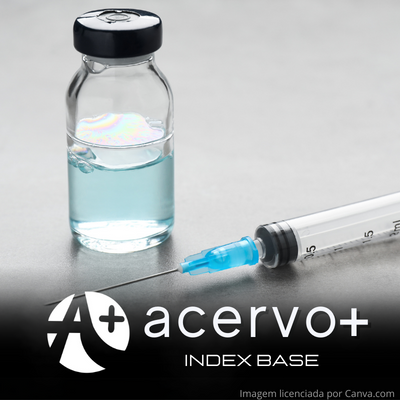Análise das características da Hipertermia Maligna: uma revisão de literatura
##plugins.themes.bootstrap3.article.main##
Resumo
Objetivo: Analisar as características da Hipertermia Maligna (HM). Revisão bibliográfica: A HM é uma rara emergência anestésica. Consiste em uma doença farmacogenética dos músculos esqueléticos com risco de vida que se apresenta como uma resposta hipermetabólica exagerada a agentes anestésicos voláteis e relaxantes musculares despolarizantes. Os sinais clínicos de hipermetabolismo, incluindo hipercapnia, taquicardia e rigidez muscular generalizada, seguida de hipertermia, acidose metabólica e respiratória, hipercalemia e resultante arritmia ou parada cardíaca. Essa reação ocorre em indivíduos com certa predisposição genética. Como os pacientes suscetíveis não apresentam alterações fenotípicas antes da anestesia, é impossível diagnosticá-los antes da exposição ou antes da realização de exames específicos. Considerações finais: A hipertermia maligna é um transtorno farmacogenético raro, possivelmente letal, do músculo esquelético, que envolve a liberação de íons cálcio do retículo sarcoplasmático que ocorre em indivíduos geneticamente suscetíveis que têm uma resposta hipermetabólica a certos anestésicos voláteis (como halotano, isoflurano, sevoflurano, desflurano, enflurano), isoladamente ou em conjunto com um relaxante muscular despolarizante (especificamente, succinilcolina). O Dantroleno é o medicamento de escolha nesses casos, devendo estar prontamente disponível na sala de cirurgia.
##plugins.themes.bootstrap3.article.details##
Copyright © | Todos os direitos reservados.
A revista detém os direitos autorais exclusivos de publicação deste artigo nos termos da lei 9610/98.
Reprodução parcial
É livre o uso de partes do texto, figuras e questionário do artigo, sendo obrigatória a citação dos autores e revista.
Reprodução total
É expressamente proibida, devendo ser autorizada pela revista.
Referências
2. ALTAMIRANO F, et al. Is malignant hyperthermia associated with hyperglycaemia? Br J Anaesth, 2019; 122(1): e3-e5.
3. BARBOSA TFG, et al. Malignant hyperthermia: a case report with good outcome. Porto Biomed J, 2021; 6(1): e080.
4. BEEBE D, et al. Genetics of Malignant Hyperthermia: A Brief Update. J Anaesthesiol Clin Pharmacol, 2020; 36(4): 552-555.
5. BIESECKER LG, et al. Genomic Screening for Malignant Hyperthermia Susceptibility. Anesthesiology, 2020; 133(6): 1277-1282.
6. BLAIS A. Succinylcholine, malignant hyperthermia and rhabdomyolysis. CMAJ. 2022; 194(25): E878.
7. BIN X, et al. Malignant Hyperthermia: A Killer If Ignored. J Perianesth Nurs, 2022; 37(4): 435-444.
8. CIENIEWICZ A, et al. Malignant hyperthermia - what do we know in 2019? Anaesthesiol Intensive Ther, 2019; 51(3):169-177.
9. GARCÍA-MURO C, et al. Malignant hyperthermia syndrome: A rare entity. Bol Med Hosp Infant Mex, 2020; 77(6): 337-340.
10. GONG X. Malignant hyperthermia when dantrolene is not readily available. BMC Anesthesiol, 2021; 21(1): 119.
11. GUPTA PK, et al. Anaesthetic management of a known or suspected malignant hyperthermia susceptible patient. BJA Educ, 2021; 21(6): 218-224.
12. HOPKINS PM, et al. Malignant hyperthermia 2020: Guideline from the Association of Anaesthetists. Anaesthesia, 2021; 76(5): 655-664.
13. JOHNSTON JJ, et al. Variant curation expert panel recommendations for RYR1 pathogenicity classifications in malignant hyperthermia susceptibility. Genet Med, 2021; 23(7): 1288-1295.
14. KIM HJ, et al. Malignant hyperthermia and dantrolene sodium. Korean J Anesthesiol, 2019; 72(1): 78-79.
15. LARACH MG. A Primer for Diagnosing and Managing Malignant Hyperthermia Susceptibility. Anesthesiology, 2018; 128(1): 8-10.
16. LITMAN RS, et al. Malignant Hyperthermia Susceptibility and Related Diseases. Anesthesiology, 2018; 128(1): 159-167.
17. KAUR H, et al. Malignant Hyperthermia. Mo Med, 2019; 116(2): 154-159.
18. MILLER DM, et al. Genetic epidemiology of malignant hyperthermia in the UK. Br J Anaesth, 2018; 121(4): 944-952.
19. MIN JY, et al. Delayed-onset malignant hyperthermia in the postanesthetic care unit: a case report. J Int Med Res, 2021; 49(9): 3000605211044201.
20. MUNGUNSUKH O, et al. Estimating prevalence of malignant hyperthermia susceptibility through population genomics data. Br J Anaesth, 2019; 123(3): e461-e463.
21. PATTON K, BORSHOFF DC. Adverse drug reactions. Anaesthesia, 2018; 73(1): 76-84.
22. RAMANUJAM M, et al. Malignant hyperthermia: An Indian perspective. J Anaesthesiol Clin Pharmacol, 2019; 35(4): 557-558.
23. RIAZI S, et al. Malignant Hyperthermia in the Post-Genomics Era: New Perspectives on an Old Concept. Anesthesiology, 2018; 128(1): 168-180.
24. RUFFERT H, et al. Consensus guidelines on perioperative management of malignant hyperthermia suspected or susceptible patients from the European Malignant Hyperthermia Group. Br J Anaesth, 2021; 126(1): 120-130.
25. SHI Y, et al. Dantrolene : From Malignant Hyperthermia to Alzheimer's Disease. CNS Neurol Disord Drug Targets, 2019; 18(9): 668-676.
26. SMITH JL, et al. A comprehensive review of malignant hyperthermia: Preventing further fatalities in orthopedic surgery. J Orthop, 2018; 15(2): 578-580.
27. SU IM, et al. Rapid screening for mutations associated with malignant hyperthermia using high-resolution melting curve analysis. Tzu Chi Med J, 2021; 33(4): 399-405.
28. YANG L, et al. The current status of malignant hyperthermia. J Biomed Res, 2019; 34(2): 75-85.
29. YOO SW, et al. A case report of malignant hyperthermia in a patient with myotonic dystrophy type I: A CARE-compliant article. Medicine (Baltimore), 2021; 100(23): e25859.
30. WONG CA. Dantrolene and Malignant Hyperthermia Carts: Do We Need Them on Maternity Units? Anesthesiology, 2018; 129(2): 225-227.

